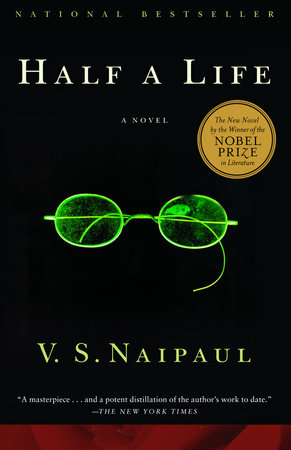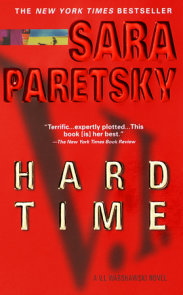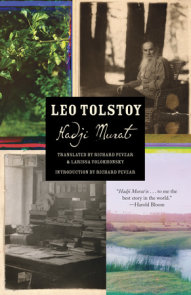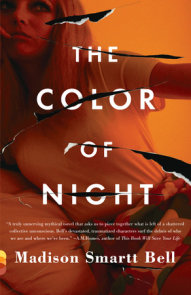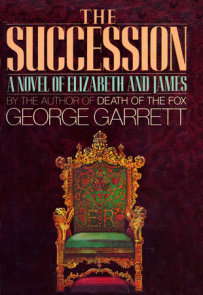READERS GUIDE
NATIONAL BESTSELLER“ A masterpiece . . . and a potent distillation of the author’s work to date.” —The New York Times
The introduction, discussion questions, suggested reading list, and author biography that follow are designed to enhance your group’s reading of Half a Life, V. S. Naipaul’s first novel since the exultantly acclaimed A Way in the World.
Introduction
Half a Life is the story of Willie Chandran, whose father, heeding the call of Mahatma Gandhi, turned his back on his Brahmin heritage and married a woman of low caste–a disastrous union he would live to regret, as he would the children that were a product of it. When Willie reaches manhood, his flight from the travails of his mixed birth takes him from India to London, where, in the shabby haunts of immigrants and literary bohemians of the 1950s, he contrives a new identity. He buries his self-doubt in sexual adventures and in the struggle to become a writer–strivings that bring him to the brink of exhaustion, from which he is rescued, to his amazement, only by the love of a good woman. Together they return to her home to live out the last doomed days of colonialism, while Willie remains a passive bystander in yet another life that is not his own.In a spare and beautifully crafted narrative that takes us across three continents, Naipaul explores his great theme of inheritance with an intimacy and directness unsurpassed in his extraordinary body of work. And even as he lays bare the bitter comical ironies of assumed identities, he gives us a poignant spectacle of the enervation peculiar to the borrowed life. In one man’s determined rejection of his own circumstance, Naipaul reveals a universal experience. As Willie comes to see, “Everything goes on a bias. The world should stop, but it goes on” [p. 106]. A masterpiece of economy and emotional nuance, Half a Life is an indelible feat of the imagination.
Questions and Topics for Discussion
1. The novel begins with Willie’s question to his father about why he was named after the English novelist W. Somerset Maugham. If a name is a crucial piece of a person’s identity, how useful is the information Willie receives? How does Maugham come across in his responses to Willie’s and his father’s letters?
2. How does Willie’s father become a holy man? What is comical, and what is reprehensible, in the choices he makes? Is he a person trapped in circumstances beyond his control, or might he have done things differently? What is the source of his narcissism? Considering that in Maugham’s The Razor’s Edge, the holy man is believed by his Western admirers to be a person of true integrity, why does Naipaul portray this character as a fraud?
3. Naipaul has written about India’s caste system in several of his nonfiction books. How does he recreate the social world of a caste-based culture in this novel? Why does he choose to root the circumstances of a novel about identity–or the lack of it–in a character’s half-hearted effort to rebel against the caste system? Given the feelings he expresses for his wife and child on pages 32 and 33, is Willie’s father a racist at heart, despite his admiration for Gandhi?
4. Willie has a painful love for his mother and despises his father. Why do his mother and sister seem immune to the sense of shame that Willie’s father has passed along to his son? What are the effects, in Willie’s later life, of this internalized shame?
5. What do the stories that Willie writes while in school [pp. 38—45] communicate to the reader? Which of them is the most powerful? Does Willie’s creativity spring solely from his hatred for his father? In his “Prologue to an Autobiography,” Naipaul wrote, “To become a writer, that noble thing, I had thought it necessary to leave [home]. Actually to write, it was necessary to go back. It was the beginning of self-knowledge.” How does this statement relate to Willie’s brief writing career?
6. What is the reason for Willie’s lack of knowledge about the world? How does he adapt to life in London? What point is Naipaul making about the insular world from which Willie comes?
7. How does it change his outlook when Willie realizes that a culture’s rules are largely “make-believe,” and that “he was free to present himself as he wished. He could, as it were, write his own revolution” [p. 57]? What difference does this new sense of freedom make for his life in the immigrant community in London? How does he attempt to remake himself? How successful is he in shedding his past?
8. Is it significant that Willie’s first book is, “in substance . . . like the story Willie had heard over many years from his father” [p. 96]? How is Willie like his father, and in what ways does his life, as it develops throughout the novel, mirror his father’s life?
9. What is the effect on Willie of his father’s letter telling him of Sarojini’s “international marriage” [pp. 105—06]? What do Sarojini’s letters, and the way she conducts her own life, say about her? Why is she so different from her brother?
10. In the aftermath of his book’s publication, Willie believes, “All that he had now was an idea–and it was like a belief in magic–that one day something would happen, an illumination would come to him, and he would be taken by a series of events to the place he should go. What he had to do was to hold himself in readiness, to recognise the moment” [p. 114]. What sort of revelation is this? Is Willie’s passivity simply the deepest expression of his character, or can it be attributed to his status as an exile who has willingly cut himself off from his past?
11. Is Ana’s letter the sign Willie has been waiting for? Is Ana’s plantation “the place he should go” [p. 114]? Why does Ana choose Willie? Why does he attempt to keep the truth of his background from her? Why, in the end, does he decide to leave her? Is he unable to face the political changes, as well as the violence, that may come to Ana’s part of the world?
12. In Half a Life, Willie moves from India to an unnamed country in East Africa; both are areas about which Naipaul has written at length. If you have read Naipaul’s nonfiction travel writing, or any his novels set in Africa, what is familiar or unfamiliar about his treatment of India and Africa in this novel? How does Willie’s life in Africa differ from his family’s life in India? Why is race such a preoccupation in the plantation society in which Willie moves?
13. Willie’s friend Percy Cato comes from a similar colonial background and is also of mixed blood, as is the tile worker Willie observes at work in the Portuguese seafood restaurant. How does Willie compare with Percy? Why is Willie so moved at the sight of the persecuted tile worker that he thinks to himself, “Who will rescue that man? Who will avenge him?” [p. 155]
14. What is notable about Naipaul’s writing style in Half a Life? How does the novel’s structure reflect Naipaul’s themes of time, memory, and the retelling of experience? Why does the novel end where it does?









